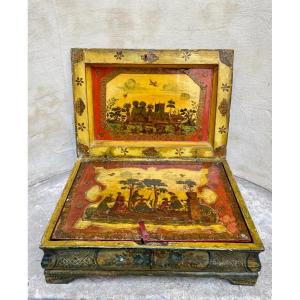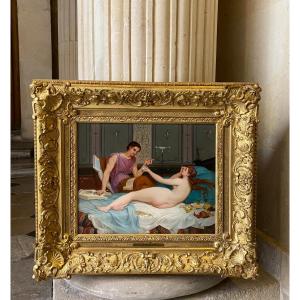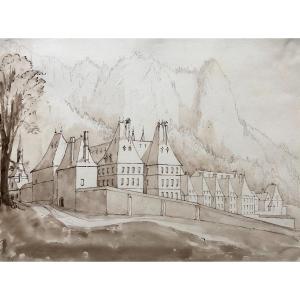These portraits, improperly called physiognotraces but which we should call "immobile portraits", are made with pastels. They were painted by artists who traveled from town to town in the late 18th century and who offered their services to local notables. To make them, we made the model sit in front of a sheet of paper stretched over a frame. The painter faithfully reproduced the outline by transparency then completed the face and the bust in pastel. Their size is relatively small, because the artists carried the sheets of paper in backpacks. Some were made on blue or pink paper.
Then came an inventor named Chrétien who perfected the system using a pantograph that mechanically reproduced a person's profile. It is this engraving that is called physiognotrace.
It is customary to say that these systems which use light and the imprint on a paper are at the origin of photography.
On the back of these drawings we can read my mother at the age of 12 in 1808 my father at the age of 19 in 1808 (so many questions around these inscriptions ...).
The frames are posterior.
Very good condition.




















![Dg84-drawing-m.vorobieff-stebelska-marevna-[precolumbian-d.rivera-mexico]-1960](https://www.proantic.com/galerie/home-decor/img/small/1001287-main-6329b07fdc4eb.jpg)







 Le Magazine de PROANTIC
Le Magazine de PROANTIC TRÉSORS Magazine
TRÉSORS Magazine Rivista Artiquariato
Rivista Artiquariato
